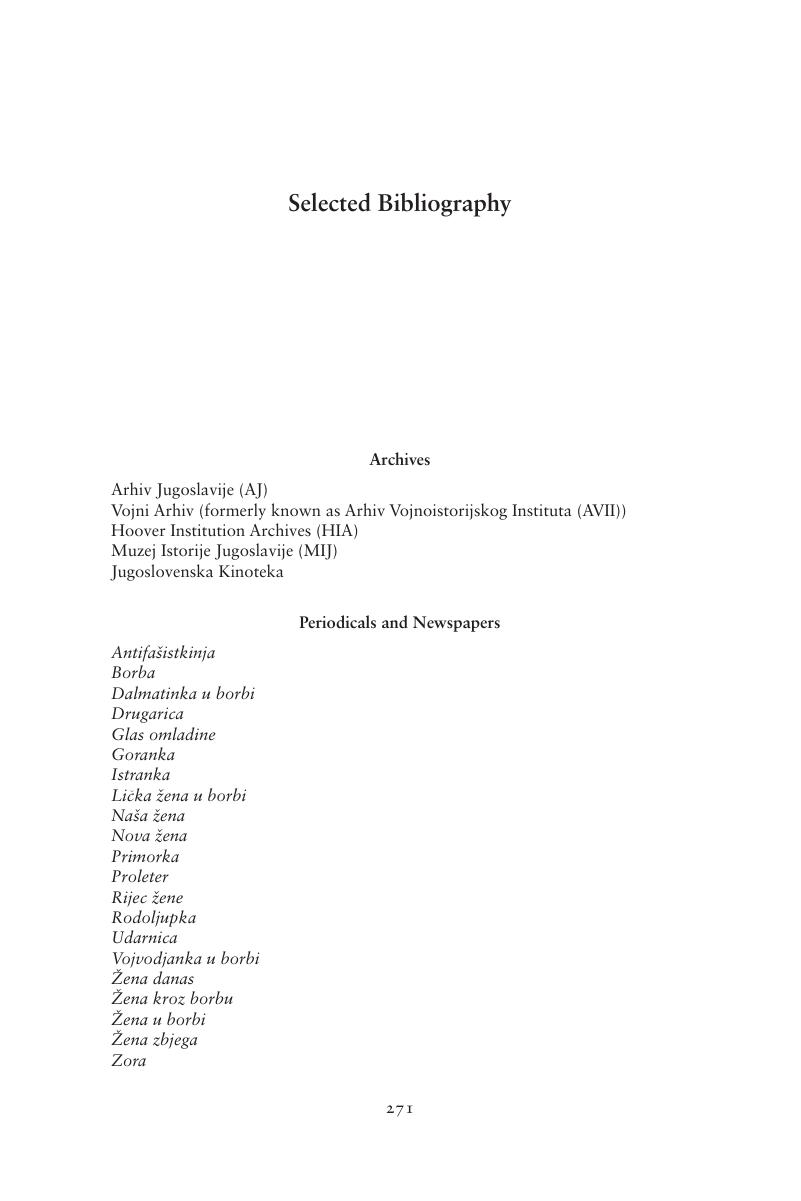Book contents
- Women and Yugoslav Partisans
- Women and Yugoslav Partisans
- Copyright page
- Contents
- Illustrations
- Note on Translation
- Book part
- Introduction
- 1 “To the People, She Was a Character from Folk Poetry”
- 2 The “Organized Women”
- 3 The Heroic and the Mundane
- 4 The Personal as a Site of Party Intervention
- 5 After the War Was Over
- Conclusion
- Selected Bibliography
- Index
- References
Selected Bibliography
Published online by Cambridge University Press: 05 June 2015
- Women and Yugoslav Partisans
- Women and Yugoslav Partisans
- Copyright page
- Contents
- Illustrations
- Note on Translation
- Book part
- Introduction
- 1 “To the People, She Was a Character from Folk Poetry”
- 2 The “Organized Women”
- 3 The Heroic and the Mundane
- 4 The Personal as a Site of Party Intervention
- 5 After the War Was Over
- Conclusion
- Selected Bibliography
- Index
- References
Summary

- Type
- Chapter
- Information
- Women and Yugoslav PartisansA History of World War II Resistance, pp. 271 - 282Publisher: Cambridge University PressPrint publication year: 2015



